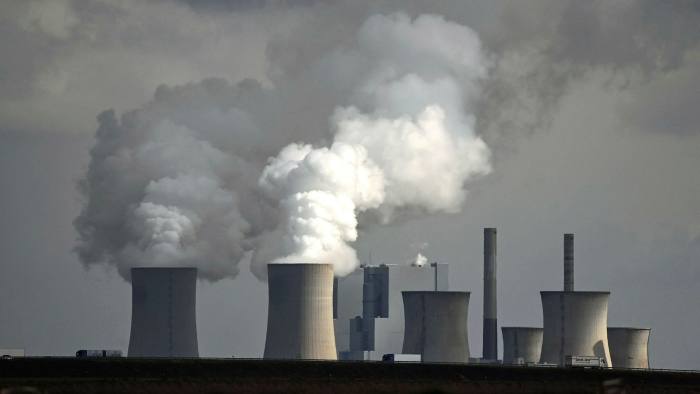WEO Includes Scenario Which Shows Pathway To Net Zero Energy System By 2050
Over 90% of the world’s population breathes polluted air on a daily basis

The International Energy Agency just released its annual World Energy Outlook, its flagship publication which maps out expectations for energy supply and demand for decades to come, and is widely referred to by governments and businesses.
For the first time, the WEO includes a scenario that shows a pathway to a net zero energy system by 2050 as a central scenario. It shows a reality in which:
By 2030, annual investments in renewable energy grow to surpass investments in fossil fuel production: $1.3 trillion investments are estimated for power generation from renewables in a single year.

Investments in LNG are not a safe choice: the total stranded capital is estimated at USD 75 billion; meaning that most of the investors in the LNG projects currently under construction would not recover their invested capital;
Over 90% of the world’s population breathe polluted air on a daily basis, which the IEA estimates as leading to over 5 million premature deaths a year. Under the net zero scenario, this number could be dramatically reduced: by 2030 there are 1.9 million fewer premature deaths from household air pollution per year than in 2020, with over 95% of the reduction occurring in emerging markets and developing economies
This year’s WEO comes in the middle of an energy price crisis, the causes of which are explained clearly by the IEA in a recently published blog: “Recent increases in global natural gas prices are the result of multiple factors, and it is inaccurate and misleading to lay the responsibility at the door of the clean energy transition,” said IEA Executive Director Fatih Birol. He goes on to explain that “This increase has been driven by the surge in gas, coal and carbon prices in Europe.” and “Well-managed clean energy transitions are a solution to the issues that we are seeing in gas and electricity markets today – not the cause of them.”
Gas, coal and electricity prices have in recent weeks risen to their highest levels in decades. These increases have been caused by a combination of factors, but it is inaccurate and misleading to lay the responsibility at the door of the clean energy transition.
Dave Jones, Global Programme Lead, Ember said “The IEA’s World Energy Outlook shows that electricity sector decarbonisation is the biggest single lever for closing the 2030 ambition gap for 1.5C. Wind and solar deployment this decade need to be double what is already announced by countries. That would cut coal generation enough to keep 1.5 degrees within reach. COP26 will be defined by what commitments are forthcoming for 2030, so the fact that the power sector is where the biggest gap lies means COP commitments for 2030 need to address clean power head on.”
The report makes clear the urgency of working towards clean power: “the electricity sector decarbonisation is the biggest single lever for closing the 2030 ambition gap”. The IEA’s number one solution is for a massive push to clean electricity, needing double solar and wind power this decade relative to policies already announced. This wind and solar will reduce coal generation. Alongside methane reductions, replacing coal with solar and wind is the biggest zero-cost emissions reduction available this decade, the IEA shows.
The historic plunge in global energy consumption in the early months of the Covid-19 crisis last year drove the prices of many fuels to their lowest levels in decades. But since then, they have rebounded strongly.Natural gas prices have seen the biggest increase, with European and Asian benchmark prices hitting an all-time record last week – around ten times their level a year ago.
In US natural gas prices have more than tripled since October 2020 to reach their highest level since 2008.
International coal prices are around five times their level a year ago, and coal power plants in China and India, the world’s two largest coal consumers, have very low stocks ahead of the winter season.
The strong increases in natural gas prices have prompted substantial switching to the use of coal rather than natural gas to generate electricity in key markets, including the United States, Europe and Asia. The increased use of coal is in tiving up CO2 emissions from electricity. generation globally.
Kelly Trout, Research Co-Director, Oil Change International said that “We’ve seen some governments and fossil fuel companies dismiss the IEA’s 1.5°C scenario as ‘unrealistic,’ yet there’s no greater delusion than thinking we can solve the climate crisis by extracting more and more fossil fuels. Governments that have relied on the WEO in the past to justify their energy investments have no credibility in ignoring the IEA’s guidance now, when it’s finally consistent with the 1.5°C limit they agreed to in Paris.
“One indication of where governments stand in heeding this science will be who joins Denmark and Costa Rica in launching the Beyond Oil and Gas Alliance at COP26, committing to end oil and gas licensing. We’re also watching to see who joins the UK and European Investment Bank in jointly commiting to end international finance for fossil fuel projects and shift funding into renewable energy solutions.
“It’s important to note that the IEA’s analysis finds no justification for new oil and gas fields despite still containing some risky modelling choices that prolong pollution. Last month, more than 150 civil society groups urged the IEA to slash over-reliance on carbon capture and storage, fossil gas, and biofuels in its 1.5°C scenario, and we’ll continue pushing the IEA to prioritize truly clean and just energy solutions.”
Link to Report: https://www.iea.org/topics/world-energy-outlook
Views expressed here are those of Dr. Seema Javed, a known Environmentalist, Journalist and Communications Expert




